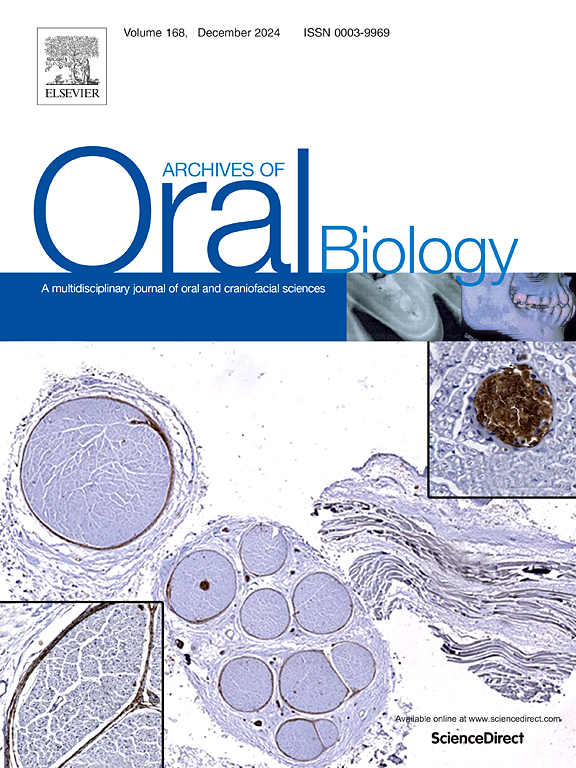Raman confocal microscopy atlas of human tooth
IF 2.2
4区 医学
Q2 DENTISTRY, ORAL SURGERY & MEDICINE
引用次数: 0
Abstract
Objective
Dental histology is a field that has been studied since the early 19th century. Most of the techniques used have been based on white-light microscopy or histological staining, or more recently immunohistochemical staining. With the advent of lasers coupled to confocal microscopy, Raman spectra can be measured in large numbers to create a detailed chemical atlas of the human tooth, offering new insights into its composition and structure.
Design
A total of twenty teeth, with 5 teeth from each type premolar, molar, incisor and canine were selected. Five teeth of different types pre-molar and molar incisor canine (total of 20 teeth) These teeth were sectioned and polished, and pulps extracted and cut into thin layers, to perform chemical mapping of all these tissues and components, including secondary structures, based on Raman scattering.
Results
We obtained images reconstructed from the intensities of the various characteristic peaks, enabling us to create an atlas of the tooth. A part of the result confirm previous study, but some structures have been revealed for the first time by chemical cartography: cementum dentin junction, dental pulp, Retzius striae, scallop pattern, Hunter-Schreger bands, sheat enamel prism content and dentin branches.
Conclusion
The present study thus provides the dental research and practice community with a complete chemical mapping of the fundamental and secondary constituents of the dental organ, with optical resolution.
求助全文
约1分钟内获得全文
求助全文
来源期刊

Archives of oral biology
医学-牙科与口腔外科
CiteScore
5.10
自引率
3.30%
发文量
177
审稿时长
26 days
期刊介绍:
Archives of Oral Biology is an international journal which aims to publish papers of the highest scientific quality in the oral and craniofacial sciences. The journal is particularly interested in research which advances knowledge in the mechanisms of craniofacial development and disease, including:
Cell and molecular biology
Molecular genetics
Immunology
Pathogenesis
Cellular microbiology
Embryology
Syndromology
Forensic dentistry
 求助内容:
求助内容: 应助结果提醒方式:
应助结果提醒方式:


